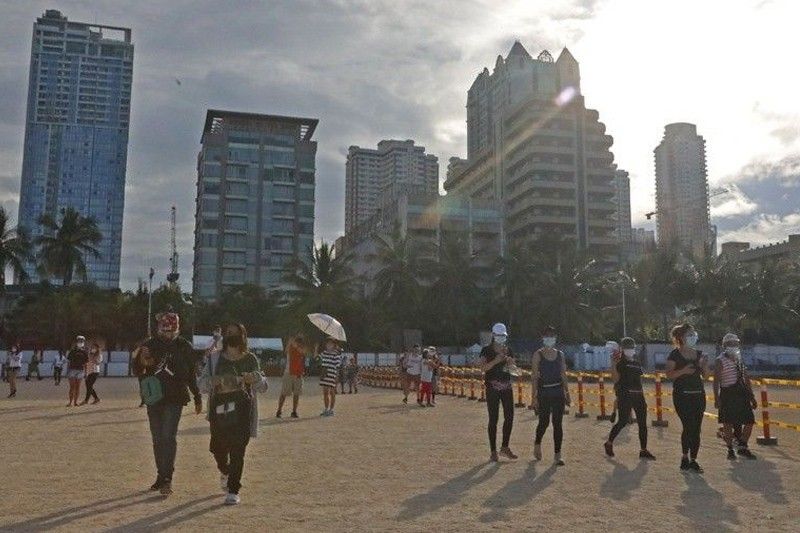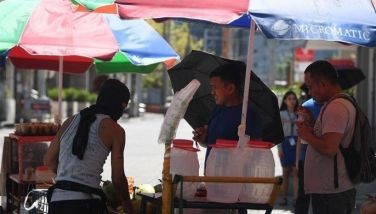Metro Manila may be downgraded to MGCQ – Palace

MANILA, Philippines — Metro Manila may be downgraded to the most lenient quarantine level next month if its residents observe health and safety protocols designed to contain COVID-19, Malacañang said.
Presidential spokesman Harry Roque Jr. said the capital region’s virus reproductive or “r-naught” rate – which indicates how contagious COVID-19 is has improved.
“If we continue to wear face masks, wash our hands frequently and avoid crowded places, it’s possible,” Roque told radio station dzBB in Filipino last Saturday when asked whether it is possible for Metro Manila to be downgraded to the most lenient modified general community quarantine (MGCQ).
“Our r-naught rate is less than one percent. Before, it was very high. That means, the number of persons who catch the virus from positive cases is now lower than one. Maybe we can achieve that,” he added.
Roque said advertisements encouraging the public to observe health protocols have helped improve Metro Manila’s COVID-19 numbers.
Asked whether more people would be allowed to attend the traditional midnight masses, Roque said it would depend on an area’s attack rate and hospital bed capacity.
The holding of midnight masses, or simbang gabi, starts on Dec. 16 and ends on Dec. 24.
“If we see improvements, they can be downgraded to MGCQ,” Roque said.
“Most of the areas in the Philippines are now under MGCQ. Only Metro Manila and a few cities and provinces are under GCQ (general community quarantine). Placing more areas under MGCQ is not farfetched. With regard to Metro Manila, it depends on the compliance with wearing masks, frequent handwashing, and physical distancing,” he added.
Metro Manila, which accounts for more than a third of the Philippines’ economic output, remains the epicenter of the coronavirus pandemic in the Philippines. More than half of the country’s 356,000 infections were reported in the capital region.
Cabinet Secretary and Inter-Agency Task Force for the Management of Emerging Infectious Diseases (IATF) vice chairman Karlo Nograles said it is too early to say whether Metro Manila would be placed under a more lenient quarantine classification. He, however, said it is not possible for the capital region to be downgraded to “new normal” from GCQ.
“If ever, it should transition first to MGCQ. In fact, we have not declared any area to be under ‘new normal.’ Let’s do it gradually,” Nograles said in a live online session last Saturday.
Nograles said the IATF may come up with a “soft” recommendation on quarantine classifications in the last week of October. The recommendation will then be submitted to President Duterte for approval.
“I cannot say whether I am confident that NCR (National Capital Region) can be downgraded to MGCQ. But the positivity rate, r-naught has gone down. It’s a balancing act,” the Cabinet official said.
Nograles said the government has been reopening the economy regardless of quarantine classification so more people can return to work.
Easing travel restrictions
In a related development, the Bureau of Immigration (BI) yesterday said that beginning Wednesday, they would be easing the restrictions for outbound Filipino travelers.
In a statement, BI Commissioner Jaime Morente said they would be following the guidelines stated by the IATF, and that “starting Oct. 21, the BI will be allowing the departure of Filipinos with non-essential travel.”
At first, only foreign nationals, overseas Filipino workers (OFWs), permanent visa holders, students enrolled abroad, participants accepted in exchange visitor programs, as well as those who had essential travel were allowed to depart.
But under IATF Resolution 79, Filipinos with non-essential travel would be allowed to leave the country.
Morente clarified that, “Outbound tourism is now allowed for Filipinos, subject to compliance with protocols set by the IATF.”
IATF Resolution no. 79 requires outbound Filipino tourists to present a round-trip ticket, health and travel insurance, and a negative antigen result at least 24 hours before departure. However, according to the ruling, they should comply with the requirement if the country of destination requires an RT-PCR test.
Departing Filipinos would also be required to sign a declaration acknowledging the risks of their travel, to be provided by airline check-in counters. “After which, passengers will still undergo regular immigration assessment,” said Morente.
As for inbound restrictions, the commissioner said, “We are on standby for any changes in policy, as directed by the IATF and the President.”
The government is studying proposals to ease the inbound travel restrictions on foreigners as pandemic-related protocols cannot be changed without preparations, Nograles said.
He said changing travel guidelines requires coordination between state agencies and the private sector because of the possible implications.
“One step at a time, let’s concentrate first on outbound... The inbound is being studied. Like I said, one step at a time,” Nograles continued.
Some Filipinos with foreigner partners have urged the government to ease travel restrictions, saying the ban has postponed the weddings of some couples. Some sectors are also urging the government to allow more foreigners to enter the country as some Filipinos do not have the means to travel abroad.
Others are also calling on the IATF to ease the restriction by December so Filipinos and their foreigner partners can be together during the holidays.
Nograles, however, said there is no guarantee that the inbound travel restrictions would be relaxed this year.
“No promises. As I said, that is being studied. There will be a lot of factors right now. We are prioritizing Filipino OFWs coming home. For the foreigners, international tourists or international inbound passengers, it is still a work in progress,” Nograles said.
Meanwhile, as travel and tourism open up, the Philippine Coast Guard (PCG) has begun recalling some of its personnel earlier reassigned to COVID-related tasks back to their regular functions of manning seaports and patrolling beaches such as in Boracay.
With the gradual resumption of tourism-related businesses, it is expected that more people would be heading to the beaches, despite frequent rains and storms. – Evelyn Macairan
- Latest
- Trending





























